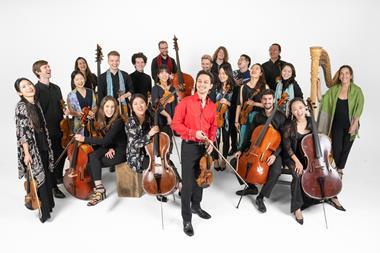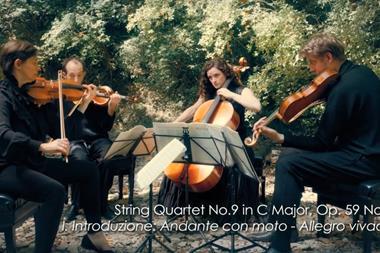In this video, violinist Rob Landes experiments with a violin made out of sheet titanium.
Its maker described some of the challenges invoveld in its construction:
‘The number one problem when working with titanium is it reacts with the oxygen in air anytime it is over 800 degrees F. The reaction will make the titanium brittle and cause the weld and heat affected zone to crack and discolor. Anytime the titanium is over 800 F it has to be “shielded” from the atmosphere with an inert gas, this is usually argon. (side note, other metals like steel have to be shielded too when welding, but nowhere remotely like titanium) The TIG welding process (Tungsten Inert Gas) is fairly commonly used for several different types of metals. It has a cup around the welding electrode that has argon flowing when welding to shield the welding area. This process is slightly modified for titanium welding. A substantially larger cup is used to shield a larger area and then a 2ndargon line has to be set up to cover the back side of the welded area with argon.
‘If you want to bend steel, you can just heat it up with a torch and bend it into shape. With titanium the reaction with oxygen doesn’t let you do that. You have to either cold form bends or have to put the entire violin in a sealed box with a window to see and sealed glove holes, then purge the box with argon, then can make bends that involve heat.
‘This titanium oxidizing reaction is where the colors come from. It is not a paint, it is not a pigment. The entire building process is working to prevent any coloration from showing up, the violin is all a silver color at the end of the build process. Then the final step is to intentionally cause a thin oxide layer. The layer is made by heating up areas of the violin body with a torch and letting it react with the oxygen in the air. The goal is a microscopic thick layer of oxide, this layer acts as a prism refracting light. Depending on how thick the layer is, it will refract different wavelengths of light, this is where the perceived color comes from.’
Reference

















































No comments yet